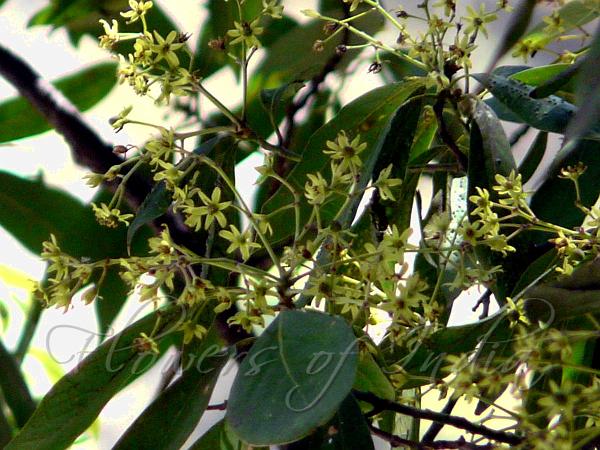|
| Fragrant Bay Tree |
|

|

| File size | 239354 |
| Original date | 4/13/08 11:12 AM |
| Resolution | 2560 x 1920 |
| Flash | Flash did not fire, auto |
| Focal length | 82.8mm |
| Exposure time | 1/125s |
| Aperture | 4.2 |
| Focus Distance | |
| Metering Mode | Multi-segment |
| Camera make | Panasonic |
| Camera model | DMC-FZ18 |
| Sensor type | OneChipColorArea |
|
|
|
|
Photo: |
Botanical name: Machilus odoratissima Family: Lauraceae (Laurel family)
Synonyms: Persea odoratissima
Synonyms: Persea odoratissima
Fragrant Bay Tree grows up to 16 m tall and 90 cm in trunk diameter. Bark
is dark grey. Branchlets are hairless smooth. Terminal bud large with many
glabrous, somewhat fimbriate, bud scales. Leaves are smooth, leathery,
lancelike to oblong-oblanceolate to elliptic-oblong, 2.5-7 cm wide and
7.5-18 cm long, acute or acuminate, base shortly acute or rounded. Both
surfaces are microscopically pitted. Leaf stalks are slender, 1-2 cm long.
Yellow flowers are borne in many-flowered panicles almost at the end of
branches, up to 12 cm long. Flowers are 6-10 mm across, with 4-5 mm long
stalks. Petals are oblong-linear sharp-tipped petals. Stamens slightly
shorter, filaments pilose near the base. Fruit ellipsoid, up to 7 x 15 mm,
sepals reflexed, oblong, 8 mm long; pedicels thick, often pinkish. Ripe
fruit is purple. Leaves which have a pleasant orange smell, are used for
silkworm cultivation. The leaves are collected as fodder for domesticated
animals while the bark is used as a red dye. The wood of the trunk is
burned as firewood, and the better sections are used in house construction
and for furniture. Fragrant Bay Tree is found in the Himalayas at
altitudes of 1500-2100 m. Hence visible in various hill station in north
India. Flowering: March-April.
| Identification credit: Navendu Pāgé | Photographed in Mussoorie, Uttarakhand. |
• Is this flower misidentified? If yes,